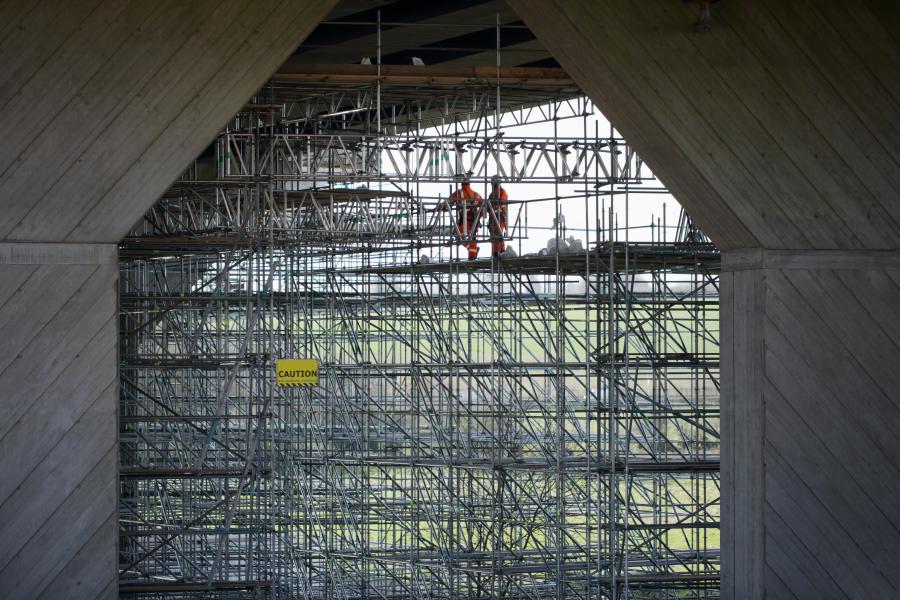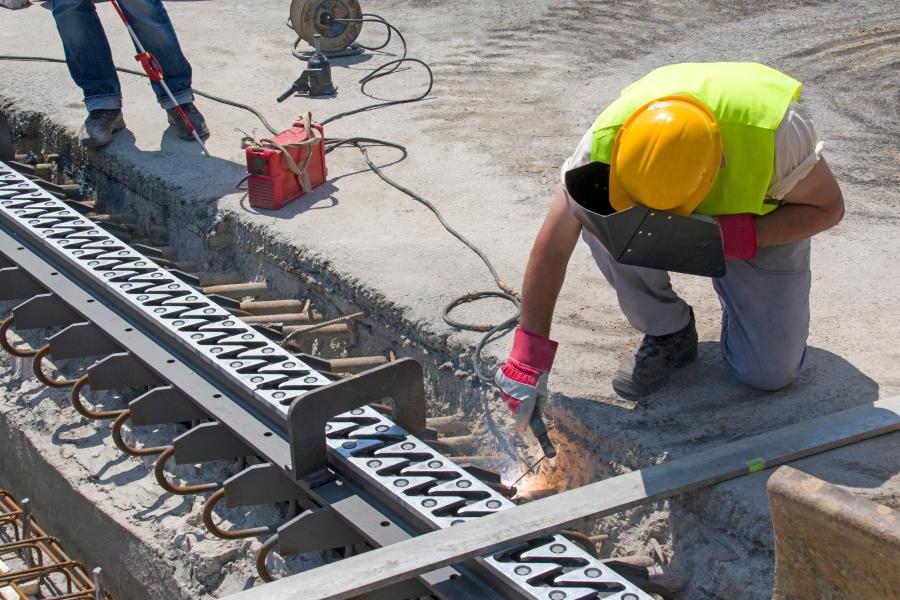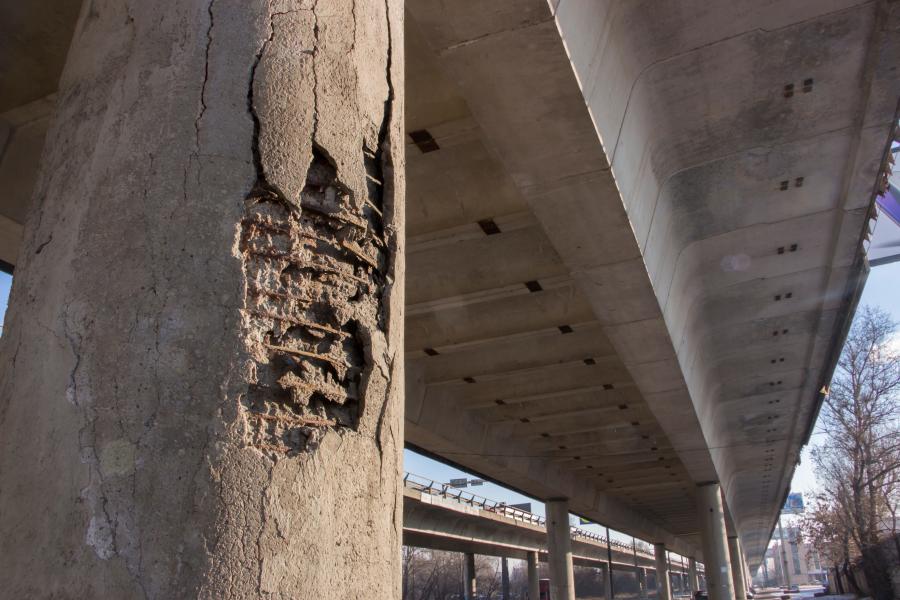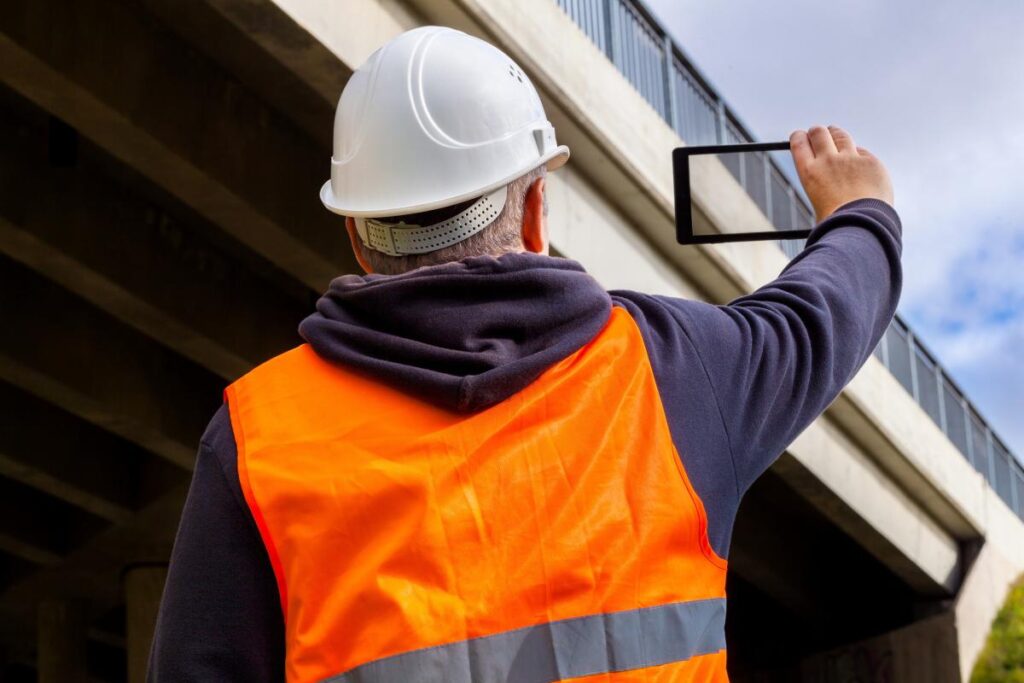Analyzing vast amounts of data, AI offers options for better information, models and decision-making alternatives.
The construction industry is adopting AI technology at a record clip, with new applications being introduced and integrated daily. The verdict is still out on the practicality of many of these new systems, but the belief is if it works for one industry it could be modified for success in another. Concerns about use and users are not stopping developers from throwing technology out there to see what sticks.
In construction design and planning applications, AI technology synthesizes information, detects patterns and draws conclusions much like humans. It offers the ability to ramp up and streamline tasks in ways the industry has not been able to achieve up to now.
Analyzing vast amounts of data, the technology offers options that give better information, models and alternatives for making decisions.
“As the construction industry embraces the digital era, AI-powered tools are proving to be transformative,” said Ashi Soni, senior manager, sustainability of Bloom Energy.
She said a wide range of technologies, from drones to autonomous vehicles are reshaping the future of infrastructure development.
“The construction sector can anticipate even more innovative solutions … in the quest to build the roads and bridges of tomorrow.”
Redefining Construction Planning
Beginning with drones, Soni noted seven “cutting-edge” AI tools that she said are revolutionizing the infrastructure building process. She believes drones are becoming indispensable in the area of construction site monitoring.
Providing real-time aerial views, the devices are helping project managers assess progress, identify issues and make informed decisions.
“AI algorithms can analyze drone-captured data to detect anomalies, measure stockpile volumes and monitor worker safety, optimizing project management,” she said.
When it comes to precision project planning, machine learning algorithms are impressing infrastructure designers, said Soni.
Used to analyze factors such as historical data, weather patterns, traffic conditions, these algorithms generate accurate construction schedules.
“By predicting potential delays and optimizing resource allocation, machine learning enhances project timelines and minimizes budget overruns,” said Soni.
Autonomous construction vehicles, including heavy machines such as dozers and excavators, navigate construction sites safely and efficiently.
Applying advanced computer vision and sensor technology, these machines increase productivity work continuously without human operators.
The result, said Soni, is reduced labor costs and overall enhanced project speed toward completion.
Smart materials, integrated with AI technology, have the ability to monitor their own structural health, added Soni.
“These materials are embedded with sensors and AI algorithms that can detect signs of wear, damage or stress.”

Real-time monitoring furthers proactive maintenance and prevents potential failures. The result is longer pavement and bridge life.
AI tools can help identify potential risks and provide actionable insights into risk management when used in predictive analytics. Analyzing vast amounts of data, including project history, weather conditions and supplier performance, AI allows project managers to mitigate risks. The result of AI-driven predictive analytics is more resilient and successful construction projects, said Soni.
Augmented reality is changing the way designs are visualized and construction teams are trained, she said. AR applications allow engineers and architects to overlay digital models onto the physical construction site.
These tools enable “a better understanding of spatial relationships and potential clashes,” said Soni. “Additionally, AR is being used for training purposes, providing immersive simulations for construction workers to enhance safety and proficiency.”
Site managers are harnessing a subset of AI for real-time quality control on construction job sites.
Computer vision joins high-resolution cameras and AI algorithms to analyze construction elements such as welding joints and concrete quality, said Soni.
The technology ensures these elements meet specified construction standards to not only improve infrastructure quality.
Computer vision features help reduce the need for manual inspections, saving time and resources, she said.
Projecting Enormous Potential
In a New York Times article, Colbi Edmonds wrote that engineers are looking to AI to build more resilient projects for less money.
A consortium is currently at work on two AI projects in partnership with Pennsylvania’s Department of Transportation and its Turnpike Commission.
“These are structures, with the tools that we have, that save materials, save costs, save everything,” said Amir Alavi, University of Pittsburgh engineering professor.
A member of the AI research consortium, Alavi sees enormous potential for more cost effective and creative new approaches to familiar tasks.
“But experts caution against embracing the technology too quickly when it is largely unregulated and its payoffs remain largely unproven,” said Edmonds.
Some in the industry worry about AI’s ability to design infrastructure in a process with regulators and participants operating over a long period of time.
“Others worry that AI’s ability to draw instantly from the entirety of the Internet could lead to flawed data that produces unreliable results,” said Edmonds.

Aging pavement means “infrastructure challenges are significant,” said Abdollah Shafieezadeh, professor at Ohio State University.
The Pennsylvania research showcases the potential AI offers in addressing many of these challenges.
The Pennsylvania DOT will use more durable concrete blocks, that require 20 percent less material, to build a bridge.
The Turnpike Commission is engineering a more efficient noise-absorbing wall that also will capture some of the nitrous oxide emitted from vehicles. The plan is to build it in an area highly affected by highway sound pollution. Alavi noted the designs will save approximately 30 percent of material costs.
These new projects have not been tested in the field, but they have been successful in the lab environment, he said.
Engineers see great potential in AI to prevent and detect damage so that money could be saved in the long run. Instead of investing large sums of money in repair projects, engineers and transportation agencies could identify problems early on.
This technology is capable of providing an analysis of what is happening in real time and could deploy emergency responses, said Seyede Fatemeh Ghoreishi, a professor at Northeastern University.
“But, as in many fields, there are increasingly more conversations about the relationship between AI, human work and physical safety,” said Edmonds.
She pointed out that although AI has proved helpful in many uses, tech leaders have testified before Congress, pushing for regulations.
“And … President Biden issued an executive order for a range of AI standards, including safety, privacy and support for workers.”
Edmonds believes experts also are worried about the spread of disinformation from AI systems.
The technology operates by integrating already available data, so if that data is incorrect or biased, the AI will generate faulty conclusions.
“It really is a great tool, but it really is a tool you should use just for a first draft at this point,” said Norma Jean Mattei, a former president of the American Society of Civil Engineers. “Once it develops, I’m confident that we’ll get to a point where you’re less likely to get issues. We’re not there yet.”
Edmonds said there also is concern about the lack of AI standards in the construction industry at present.
“There is rising concern about car crashes involving autonomous vehicles, but for now, automakers do not have to abide by any federal software safety testing regulations.”
Monitoring Structural Health
University of Central Florida researchers are at work on inventions that help improve infrastructure health.
“Structural health monitoring is an area of need internationally,” said Necati Catbas, UCF engineering professor.
He believes these new technologies can help track the aging process of civil infrastructure systems.
“By better understanding their conditions, we can anticipate risks and better prioritize infrastructure investments,” he said.
Traditional onsite visual inspection can be both time-consuming and costly, not to mention the hazards posed by aging or damaged structures.
Catbas is leading the AI research that hopes to develop technologies to help alleviate these issues and others.

One invention employs computer vision, which he believes can complement sensors and visual inspection. He said it’s practical because it doesn’t require access structures such as bridges, buildings or towers.
“We can use the camera, and by analyzing the images, we can extract meaningful information about these bridges and buildings.”
Using cameras stationed on or around a structure, the system allows for a safe assessment of a structure’s load-worthiness and serviceability remotely.
The second UCF invention in the works uses VR and AR to analyze structures via “virtual visits.”
VR provides a computer-simulated environment, while AR overlays content onto views of a real-world environment.
“I can virtually be on a damaged bridge in Florida discussing decisions with colleagues who might be in California,” said Catbas.
Like the first invention, the visualization system provides damage detection and load-carrying information about a structure using cameras and sensors.
Other tools such as robots, drones, LiDAR scanners and infrared thermography cameras are also utilized.
Level of Reassurance
The concern, too, is that these technologies will replace humans, eliminating jobs as they streamline construction.
Engineering experts believe where infrastructure projects are concerned, AI is a tool for humans, not as a substitute for them.
Lola Ben-Alon, an assistant professor of architecture technology at Columbia University is optimistic.
“There’s still a strong and important place for human existence and experience” in the field of engineering, she said.
Uncertainty may make the acquisition of funding for future AI research more of a challenge, but the engineering community is undaunted.
Alavi said his work throughout his career has shown him just how serious the potential risks from AI are.
But he remains ever confident: “After 10, 12 years, this is going to change our lives.” CEG
Read the full article here











